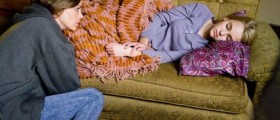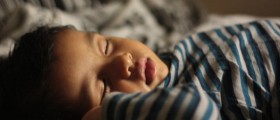
Introduction to sleepwalking
Sleepwalking is rather self-explanatory. It is when a person walks while they are still asleep. The person who is sleep walking will usually have their eyes open, but the look will be very glassy-eyes, almost as if they do not notice anyone or anything around them.
This usually occurs in children and young adolescences, but has been known to occur in adults as well.
According to statistics, about 15 percent of children between the ages of four and 12 regularly sleepwalk.
And about 10 percent of sleepwalkers begin doing son in their teens.
According to people who have studied the phenomenon intensively, there are five states of sleep.
In stages one through four, there will be non-rapid eye movements sleep occurring. REM sleep is when the person is dreaming, and this is when hormonal surges occurs that are needed for growth and maintaining the metabolism.
Each of the first four stages lasts about an hour and a half and they repeat through the night.
Therefore, a person who gets a regular amount of sleep is usually experiencing in between four and five cycles fully throughout the night.
Sleepwalking will usually occur during the first or second cycles, and most commonly in the third or fourth stage.
This is why people usually do not sleep walk when they are taking short naps, because not enough time has passed in order to the process to commence.
Also, after the sleepwalking is done, the person will have no recollection of his or her actions.
Causes
There are genetic factors that cause a person to sleepwalk, and it has been reported that identical twins have ten times greater chances of sleepwalking.
There are also environmental factors that can lead to sleepwalking. Some of these include sleep deprivation, chaotic sleep schedules, fevers, stress, a lack of magnesium and alcohol abuse.
Drugs such as sedatives and hypnotics can cause sleepwalking as well, along with tranquilizers, stimulants and antihistamines.
There are physiological factors as well, including the length and depth o f slow wave sleep. This is why children mostly sleepwalk.
Pregnancy and menstruation can increase the chance and frequency of sleepwalking as well.
Acid reflux can also increase the chances of sleepwalking, as can nighttime asthma, seizures at night, sleep apnea, and psychiatric disorders such as post-traumatic stress, panic attacks and multiple personality disorders. Preventing sleepwalkingIn order to prevent the chances of sleepwalking, above all, it is important to get regular and adequate amounts of sleep. Mediation and relaxation exercises are recommended as well. It is important to try and avoid both auditory and visual stimuli before bed.
If you are sleepwalking, then take preventive measure to avoid injury. Keep sharp objects away from the bed, avoid bunk beds you could possible fall from, and keep all windows and doors closed.

















Your thoughts on this
Loading...